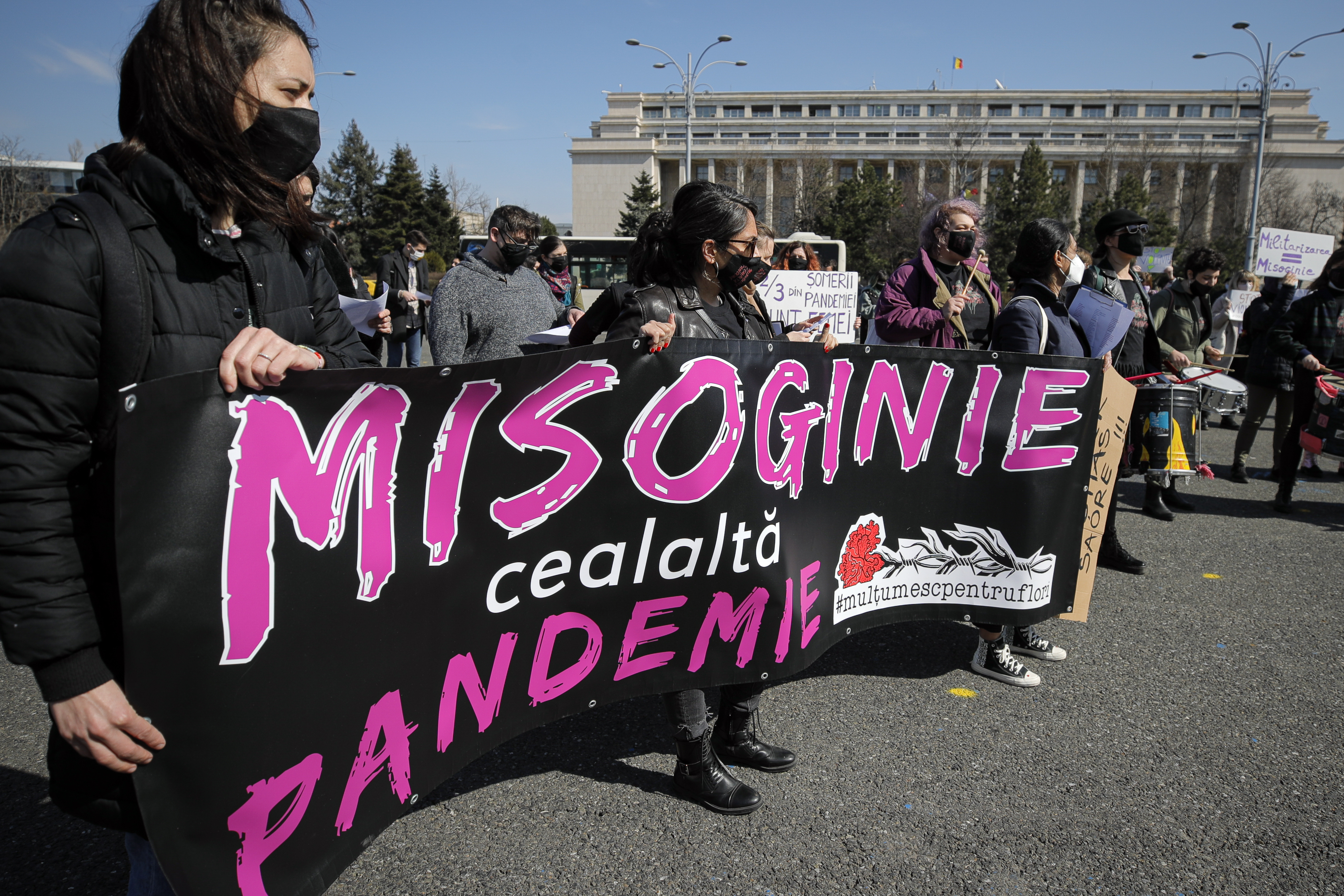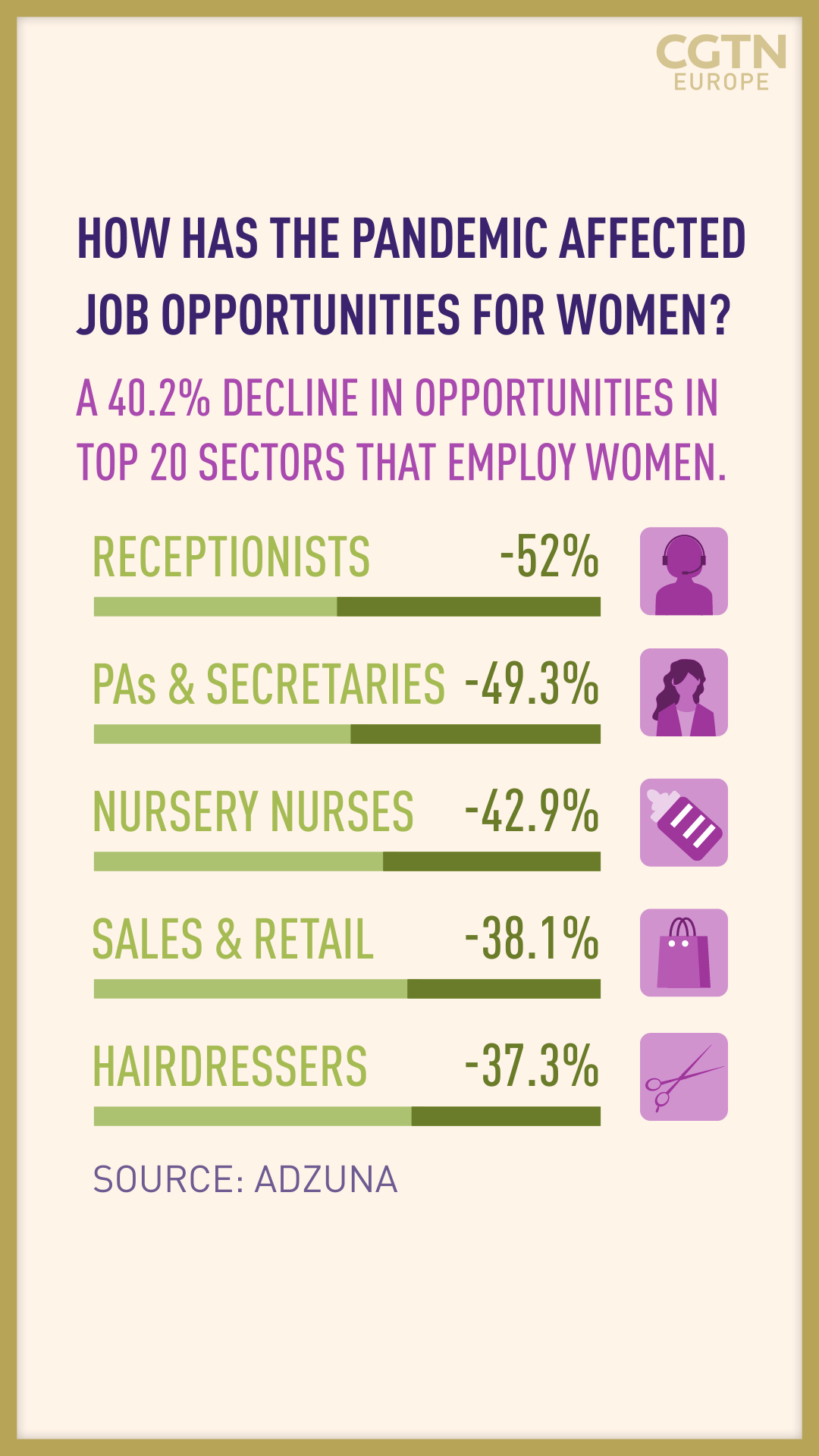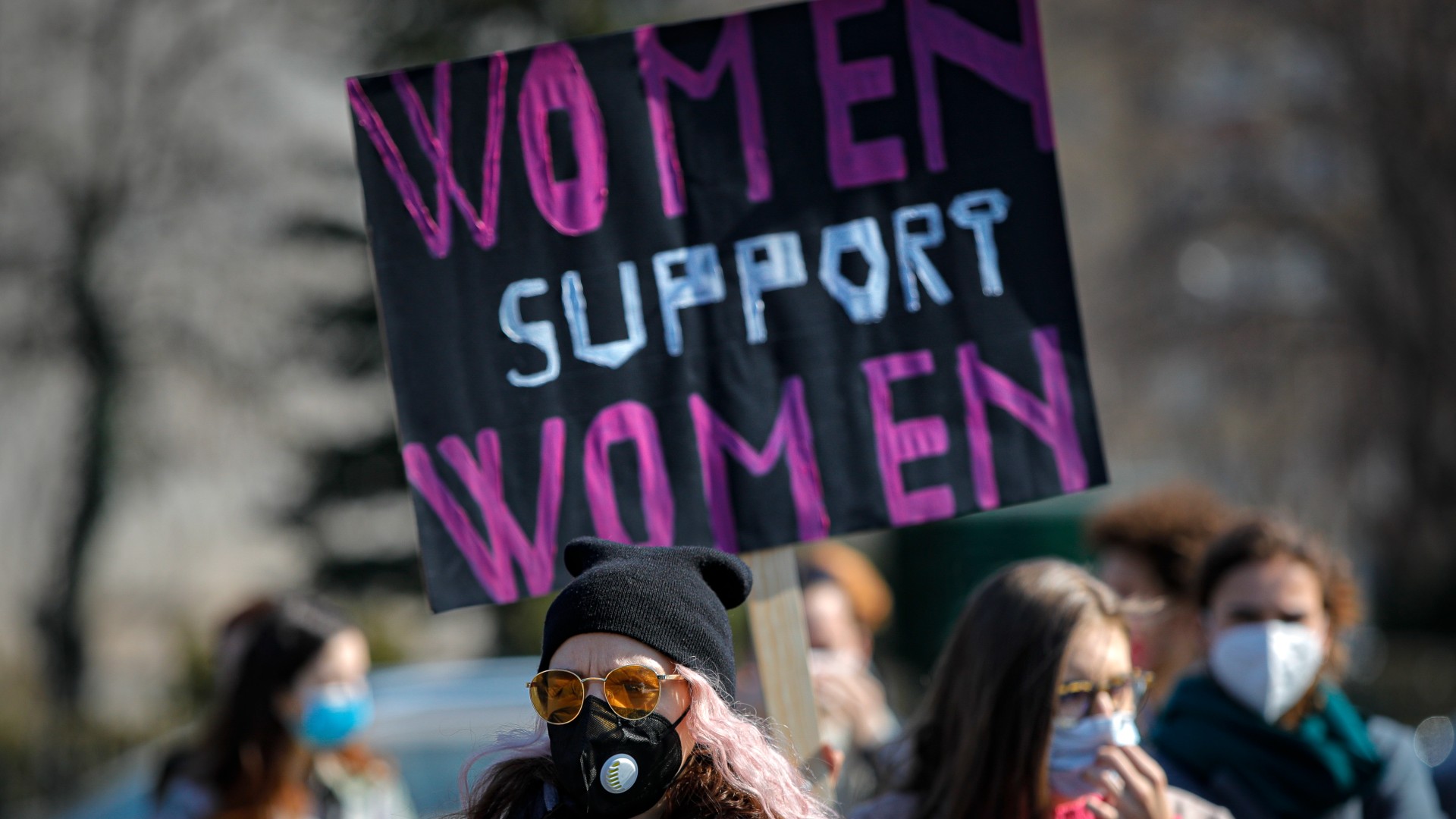
Women have been delivering the bulk of frontline healthcare around the world for years. /Petros Karadjias/AP
Women have been delivering the bulk of frontline healthcare around the world for years. /Petros Karadjias/AP
Women's role in the pandemic - as leaders, front-line health workers, parents, carers - has been acknowledged and applauded throughout the past 12 months.
Their efforts on the COVID-19 front line have been recognized by Mike Ryan, executive director of the World Health Organization's (WHO) Health Emergencies Program.
Last week, Ryan shared the health body's COVID-19 strategic preparedness and response plan for 2021.
Waving the WHO's booklet to accompany the drive, he said: "There are four very special people on the front [cover], four health workers on the front line. We definitely got our gender balance wrong because they are all women."
But he said there was a reason for this: "I'll just remind you that 80 percent of the health services of the world, the front-line health services, are delivered by women."
He added: "This is one area where women of the world have been, for years, delivering the bulk of front-line healthcare around the world and they continue to do so during COVID-19 so we celebrate them and their achievements."

Women leaders have been decisive, clear and honest in their communication and handling of the pandemic. /Vadim Ghirda/AP
Women leaders have been decisive, clear and honest in their communication and handling of the pandemic. /Vadim Ghirda/AP
Women-led health governance
There may be cause to celebrate but the question remains why, despite being greater in numbers, we do not see many women as top officials or decision-makers – key positions filled overwhelmingly more by men than women.
"I just hope in the higher levels of health services in the future, we can reflect that [the majority of healthcare workers are women] more systematically in terms of health leadership," said Ryan.
"Again, I think where we have seen more women involved in health governance, we've seen better performance in this response in general," he added.
Many women leaders have been seen to be decisive, clear and honest in their communication and handling of the pandemic.
Norway's Prime Minister Erna Solberg spoke directly to children and took their questions and addressed their concerns, while Jacinda Ardern, New Zealand's prime minister, engaged with the public through Facebook Live.
But some have associated women leaders' effective decisions to an inherent aversion to take risks compared with their male counterparts.
Is it really down to just one characteristic?
"While risk aversion may explain why women leaders chose to close down their countries significantly early when compared with their male counterparts, it does not explain the significant risk that women leaders were prepared to take with their economies by locking down early," argue Supriya Garikipati and Uma Kambhampati, in their research paper Leading the Fight Against the Pandemic: Does Gender ‘Really’ Matter?
"It could be that risks manifest differently in different domains – human life versus economic outcomes. If this were true, then women leaders could be seen as being significantly more risk averse than male leaders in the domain of human life, though, in the domain of the economy, these women leaders were clearly prepared to take more risks than male leaders," say the two researchers.
00:20

Leading the fight, juggling economic pressures
And just as we are about to enter the second year of the pandemic, women continue to lead the fight against the coronavirus yet bear the brunt of the majority of job losses stemming from the pandemic, an increase in informal caregiving, violence and abuse in their own homes – thus enduring a multitude of social and economic pressures.
The latest report by job site Adzuna shows the top 20 sectors that typically employ women have suffered a 40.2 percent decrease in opportunities, year-on-year. That compares with a fall of just 11.8 percent in the top 20 occupations for men.
Adzuna's figures reveal a 38.1 percent decline in jobs for sales and retail assistants – the sector that employed the most women in 2020 – with just 6,370 openings on offer in February 2021.
In addition to this, opportunities for receptionists have declined by a 52 percent, nursery nurses and assistant roles are now down 42.9 percent, jobs for personal assistants and other secretaries have declined 49.3 percent and opportunities for hairdressers and barbers have dived 37.3 percent.
The care sector is the only one, where most staff are women, that had a rise in employee numbers amid an increased demand for care workers and home carers during the pandemic.
Meanwhile, job openings increased in six of the top 20 male occupations, such as warehouse workers, large goods vehicle drivers, van drivers, electricians, carpenters and joiners, and construction and building trades.

Women will need support beyond the crisis to minimize the risk of burnout and to protect their mental and physical health. /Vadim Ghirda/AP
Women will need support beyond the crisis to minimize the risk of burnout and to protect their mental and physical health. /Vadim Ghirda/AP
Support beyond the pandemic
Andrew Hunter, co-founder of Adzuna, cautioned against the widening gender pay gap and increase in inequality due to the pandemic, highlighting that COVID-19 has hurt job prospects for women and burdened them with increased parenting and caring responsibilities.
"We need to take a long, hard look at how we support women through the pandemic and into work," Hunter told CGTN Europe. "Part of this is about opening up more roles to women, through better flexible working and improving childcare options."
He is also keen to make male-dominated sectors like logistics, construction and manufacturing, more accessible to women so "they benefit from the opportunities being created in these areas."
The UK's National Health Service confederation commissioned a survey to better understand the impact the pandemic has had on women working across health and care services.
Their survey found that women will need support as the crisis continues and beyond, in order to minimize the risk of burnout, to protect their mental and physical health and to give them the support they need to care for and support our communities.
This is a reality that is further evidenced by the lived experience of many women like Dorothy T, who spoke about all the extra, unpaid work she is doing at home, as part of the experiences documented by the Child Poverty Action Group.
"Life for me during the pandemic as a woman means I have to take on so many roles. I am the school teacher, the friends, the absent father and the cousins. I am the hairdresser and barber," she reflected.
"I've to constantly explain why we can't go places, why we can't see people. I am the one who spoils all the fun because I am trying to keep my family safe, healthy and happy."
Animation: James Sandifer

